Tuna is a versatile seafood powerhouse that deserves a special place in your kitchen. Whether you’re working with fresh steaks or convenient canned varieties, knowing how to handle this protein can transform everyday meals into culinary masterpieces. From quick weeknight dinners to impressive weekend feasts, these professional tips will help you make the most of tuna’s rich flavor and meaty texture.
1. Choose the Right Type of Tuna
The foundation of any great tuna dish starts with selecting the appropriate variety. Fresh yellowfin or ahi tuna delivers a buttery texture perfect for searing or grilling, maintaining that gorgeous pink center. Canned varieties offer convenience without sacrificing flavor.
Oil-packed tuna provides richness ideal for Mediterranean-inspired recipes, while water-packed options deliver a cleaner taste for lighter dishes. Albacore tends to be milder and whiter, perfect for those who find regular tuna too fishy.
For sushi-grade preparations, seek out flash-frozen tuna that’s been properly handled to eliminate parasites. Remember that darker red flesh indicates higher quality in fresh tuna steaks.
2. Master the Perfect Sear
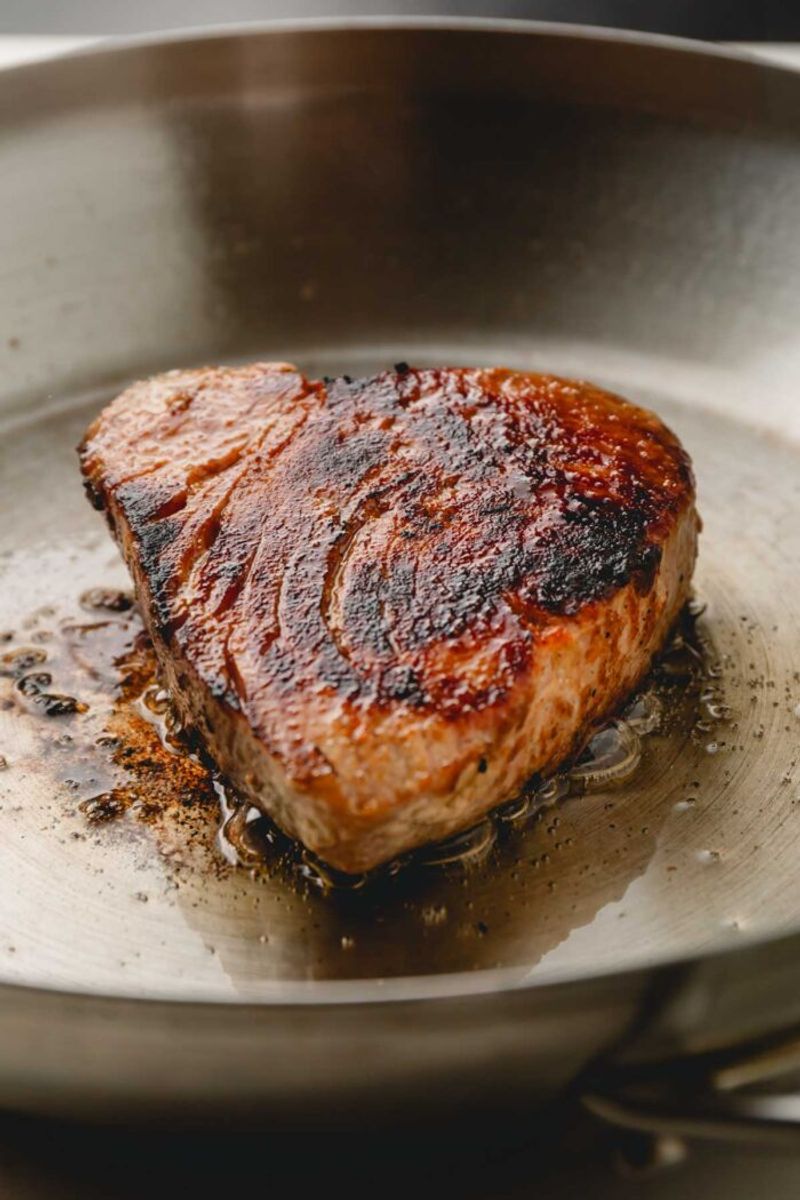
Nothing impresses dinner guests like a perfectly seared tuna steak with a caramelized crust and rare center. Start with room temperature tuna and pat it completely dry—moisture is the enemy of a good sear.
Heat your cast iron skillet until it’s smoking hot before adding a high-heat oil like grapeseed or avocado. Season your steak generously with salt and pepper just before cooking. Sear for exactly 60-90 seconds per side for a one-inch thick steak, using tongs to briefly sear the edges too.
Resist the urge to move the tuna while it’s searing! Let it develop that beautiful crust undisturbed for restaurant-quality results.
3. Elevate Canned Tuna with Smart Draining
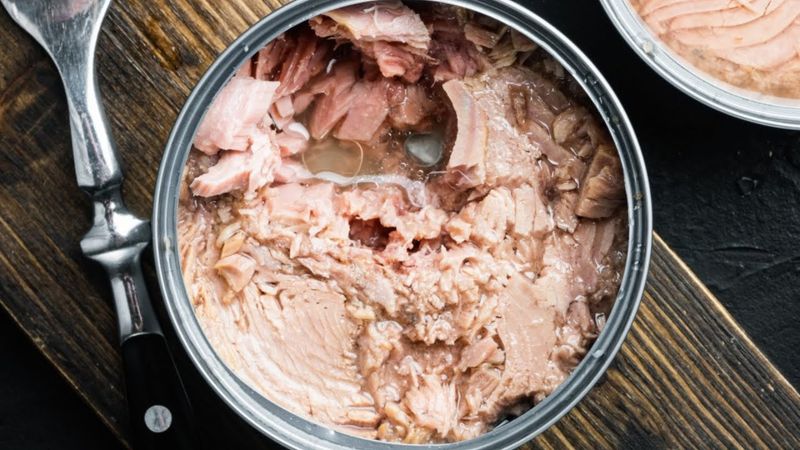
Canned tuna harbors untapped potential when properly drained. Rather than discarding all the liquid, save a tablespoon to maintain moisture in your final dish.
For oil-packed varieties, this reserved liquid adds richness to dressings and sauces. Try the gentle pressing technique: after opening, press the lid against the tuna while tilting the can to drain excess liquid without crushing the delicate flakes.
This preserves the tuna’s texture for more appetizing presentations. For water-packed tuna, consider a quick rinse under cold water to remove any metallic taste, followed by thorough draining in a fine-mesh sieve. This simple step transforms ordinary canned tuna into a premium ingredient.
4. Upgrade Tuna Salad with Texture Contrasts
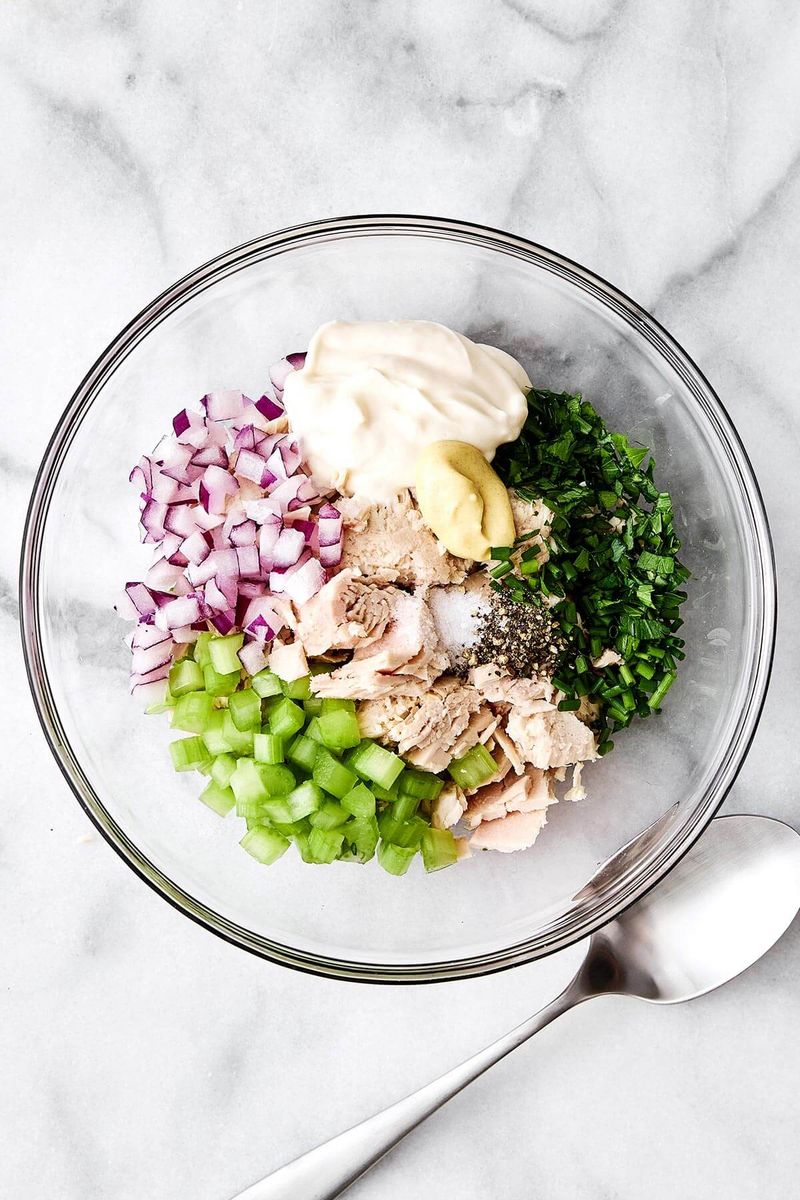
Boring tuna salad becomes extraordinary when you introduce contrasting textures. Crisp apple chunks or sliced grapes add unexpected sweetness and crunch that balance tuna’s savory profile.
Toasted nuts like walnuts or slivered almonds contribute satisfying richness and complexity. Celery remains a classic addition for good reason—its watery crunch refreshes the palate between bites of creamy tuna. For an international twist, try adding diced water chestnuts or jicama for exotic crunch without overwhelming flavor.
Don’t forget about seeds. Sunflower seeds or pepitas bring protein-packed crunch while complementing tuna’s nutritional benefits. These textural elements transform a simple sandwich filling into a memorable culinary experience.
5. Acid Is Your Secret Weapon
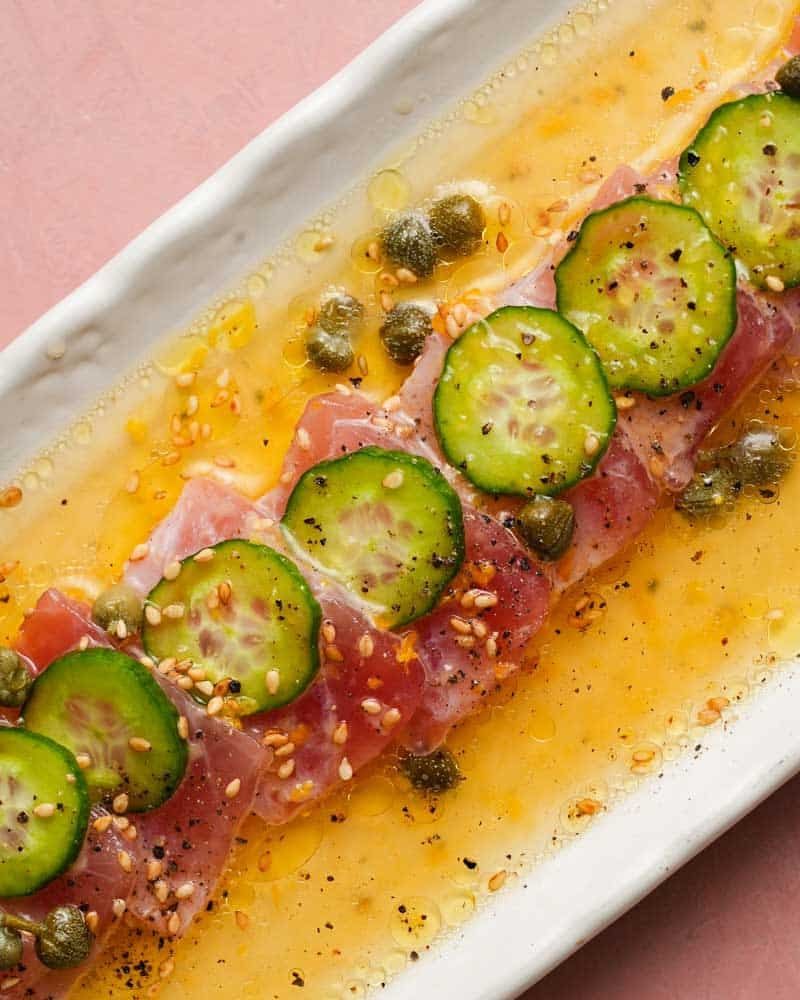
Bright acidic elements cut through tuna’s richness, creating balanced flavor profiles that sing on your palate. Fresh lemon juice squeezed over a tuna steak just before serving awakens its natural flavors without cooking the delicate flesh.
For canned tuna, a splash of quality vinegar—try red wine, champagne, or apple cider—transforms mundane mixtures. Pickled elements add both acid and interest: capers, cornichons, or quick-pickled red onions introduce complexity that elevates simple tuna dishes. Even the brine from these pickled ingredients can enhance dressings for tuna salads.
Citrus zest offers aromatic oils that perfume tuna dishes without additional liquid. Try microplaning lemon, lime, or orange zest over your finished creation for professional-level flavor enhancement.
6. Create Mediterranean Magic
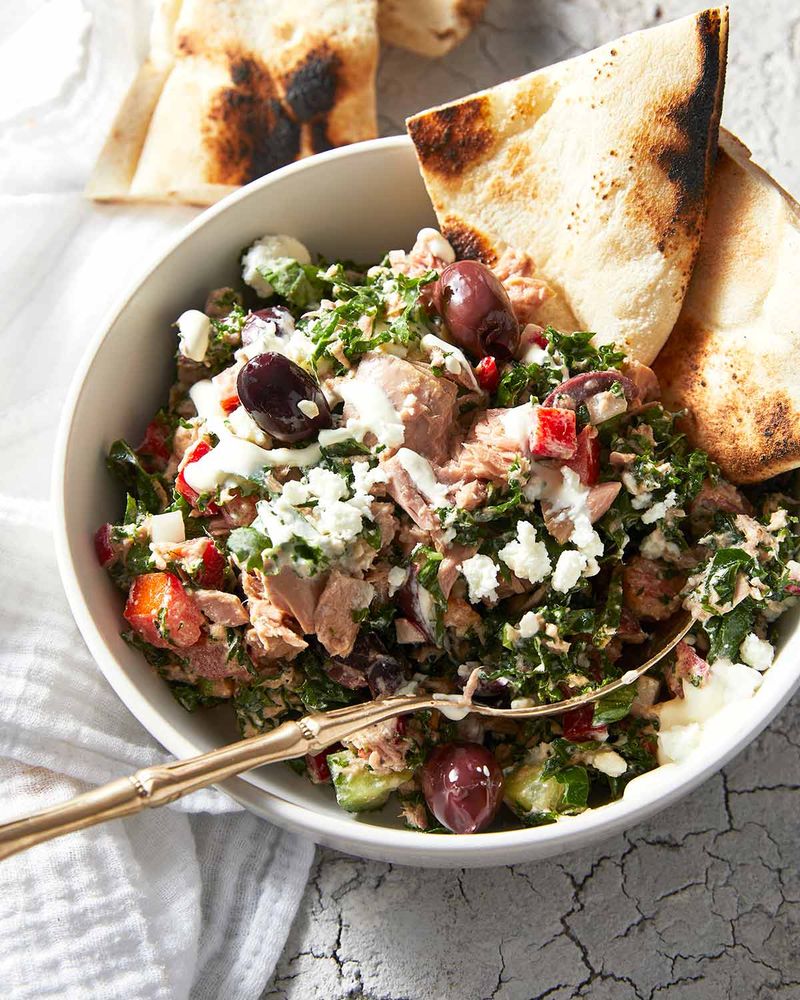
Transport your taste buds to coastal Mediterranean villages by pairing tuna with sun-drenched regional ingredients. Briny olives, whether Kalamata, Niçoise, or green Castelvetrano, contribute salty complexity that enhances tuna’s natural flavor.
Roasted red peppers add sweet smokiness that complements both fresh and canned varieties. Fresh herbs like oregano, basil, and parsley bring aromatic brightness—roughly tear rather than finely chop them to release more essential oils. A drizzle of quality olive oil ties these elements together, creating authentic Mediterranean character.
For a complete meal, layer these ingredients with tuna over warm couscous or farro. This combination creates a balanced protein bowl that captures the essence of healthy Mediterranean eating while requiring minimal cooking effort.
7. Unlock Umami Potential
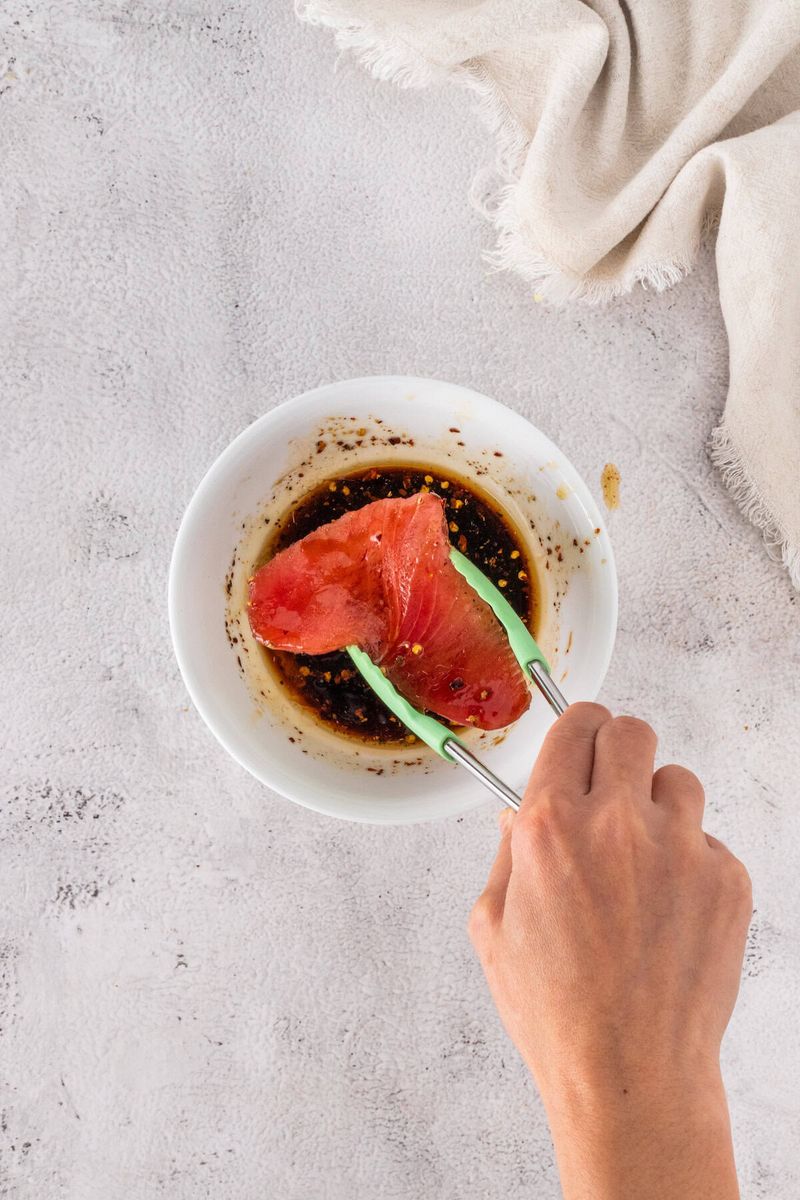
Tuna naturally contains umami compounds that can be amplified with complementary ingredients. A light brush of soy sauce or coconut aminos before searing tuna steaks enhances their savory depth without overwhelming the delicate fish.
For canned preparations, a tiny amount of anchovy paste or fish sauce works magic without tasting fishy. Mushrooms make perfect umami partners—sauté chopped shiitakes or creminis to mix with tuna for an intensely savory experience.
Even a sprinkle of nutritional yeast adds cheesy umami notes to tuna salad without dairy. Sun-dried tomatoes concentrate natural glutamates that harmonize beautifully with tuna’s flavor profile. These umami-boosting techniques create complex flavor that makes guests wonder about your secret ingredient.
8. Perfect Pasta Pairings
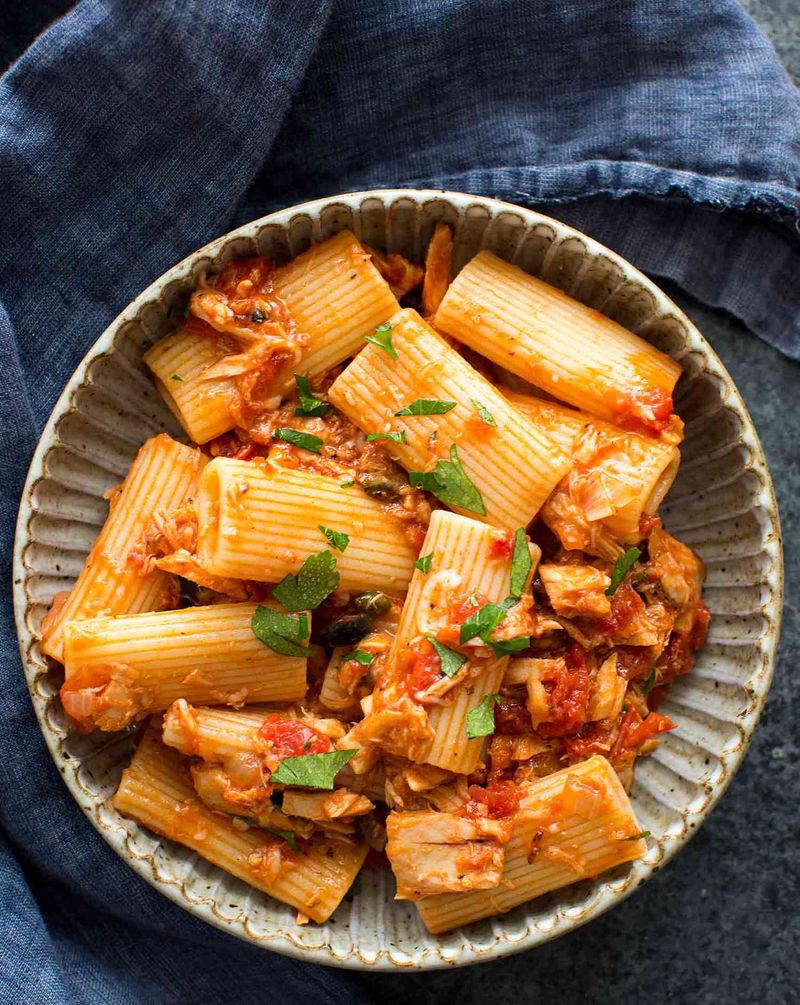
Tuna transforms pasta into a satisfying meal with minimal effort. Short pasta shapes like orecchiette or fusilli capture chunky tuna pieces and sauce better than long strands.
Reserve a quarter cup of starchy pasta water before draining—this liquid gold helps emulsify olive oil and tuna into a silky sauce that clings to every bite. For a classic Italian approach, sauté garlic in olive oil until fragrant, then add canned tuna, red pepper flakes, and chopped parsley.
Toss with hot pasta and a splash of pasta water for an authentic five-minute meal. Cold tuna pasta salads benefit from al dente cooking followed by rinsing to stop the cooking process. This prevents the pasta from absorbing all the dressing and becoming soggy.
9. Spice Blends for Global Flair
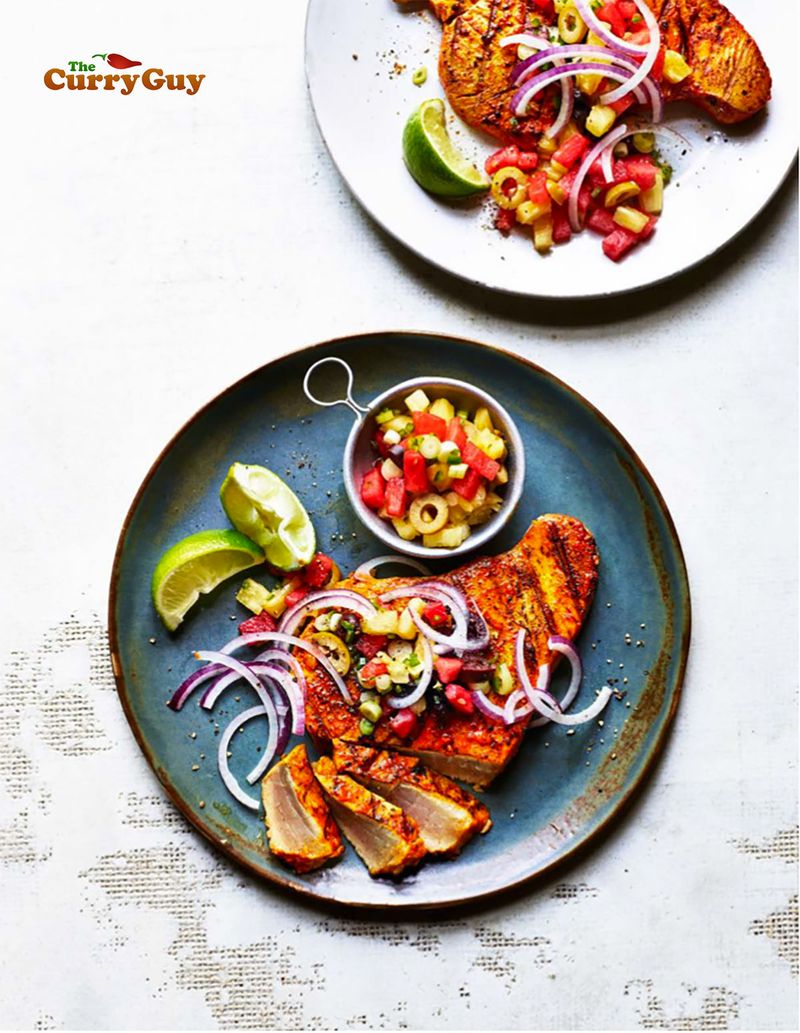
Transform ordinary tuna into international cuisine with strategic spice combinations. For North African flair, dust tuna steaks with ras el hanout before searing, then serve with a cooling yogurt sauce.
Japanese-inspired dishes shine with furikake sprinkled over rice-topped tuna bowls, adding seaweed, sesame, and umami notes. Mexican flavors emerge when you mix canned tuna with chili powder, cumin, and lime zest for instant taco filling.
Cajun blackening spices create a spicy crust on grilled tuna while sealing in moisture. Even simple curry powder warms up tuna salad when mixed with mayo and a touch of mango chutney. These spice shortcuts instantly transport your palate around the world without requiring dozens of individual ingredients.
10. Quick-Pickle for Flavor Depth
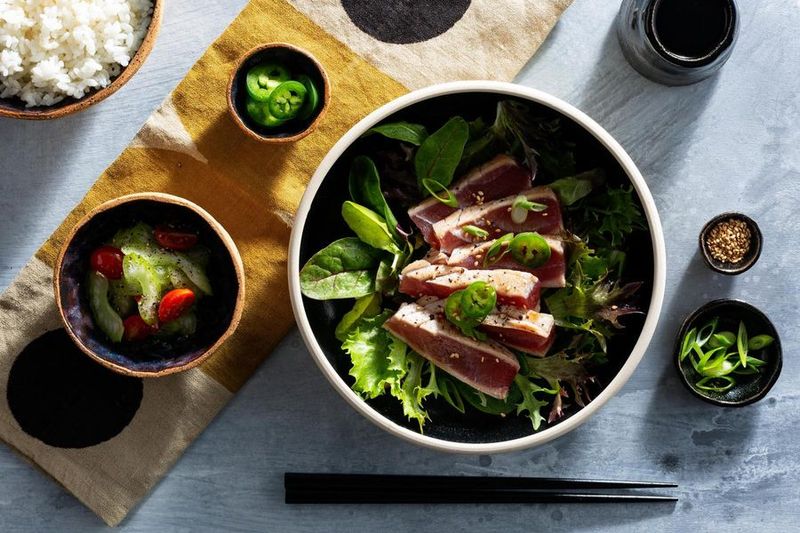
Homemade quick-pickled vegetables elevate tuna dishes with minimal effort. Thinly slice red onions and soak them in equal parts vinegar and water with a pinch of sugar for just 15 minutes. The resulting pink, crunchy topping adds brightness to any tuna preparation without harsh raw onion bite.
Cucumber ribbons pickled with rice vinegar and a touch of honey complement Asian-inspired tuna bowls. For tuna sandwiches, pickle radish slices in apple cider vinegar with mustard seeds for a zesty crunch that cuts through creamy elements.
These quick-pickled components can be prepared while your tuna cooks or even several days ahead. Unlike fermented pickles, these quick versions deliver immediate tangy satisfaction without waiting for flavor development.
11. Master the Tuna Melt Revolution
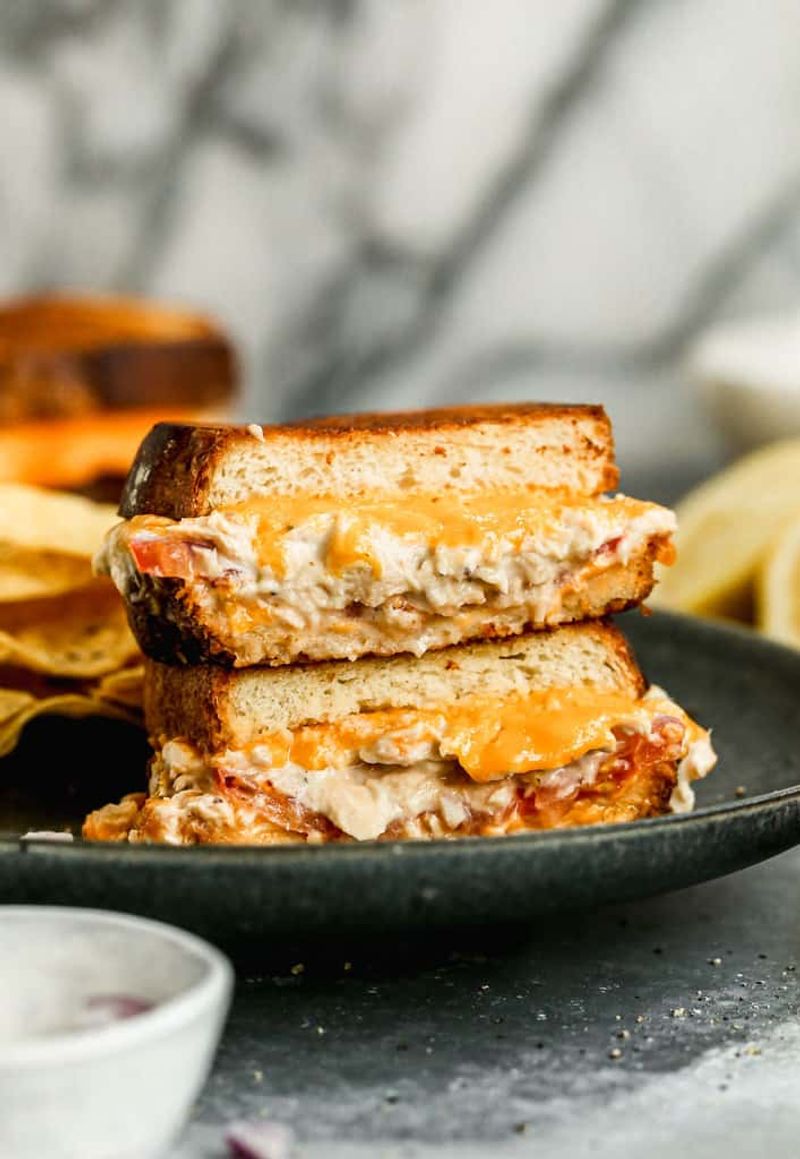
Elevate the humble tuna melt from diner classic to gourmet experience with thoughtful techniques. Start with good bread—sourdough or rye provides sturdy structure and complementary flavor.
Butter the outside of the bread rather than the pan for even browning and that distinctive crispy exterior. Mix your tuna salad with both mayonnaise and cream cheese for superior meltability that integrates with the cheese topping. Sharp cheddar, Gruyère, or pepper jack adds character beyond bland American slices.
The pro move: broil your assembled melt open-faced until bubbling, then close the sandwich and finish in a skillet. This two-step method ensures perfectly melted cheese and a hot center while maintaining the ideal crispy exterior that makes tuna melts irresistible.
12. Harness Healthy Fats
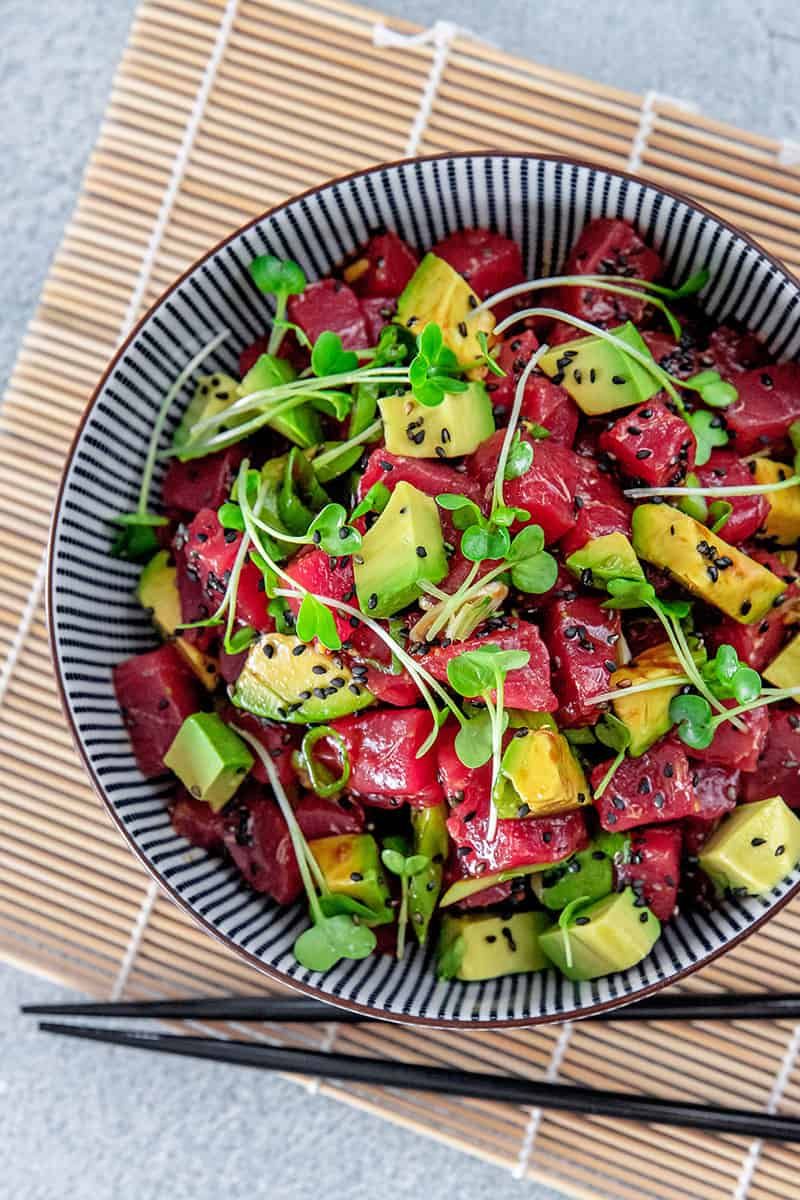
Tuna’s lean protein shines when paired with complementary healthy fats. Sliced avocado alongside seared tuna creates a buttery contrast while adding satisfying richness and heart-healthy monounsaturated fats.
A drizzle of extra virgin olive oil over canned tuna not only enhances flavor but improves nutrient absorption. Omega-3-rich walnuts or pine nuts add crunch and nutritional synergy to tuna salads—toast them first to intensify their nutty flavor. For Asian-inspired tuna bowls, sesame oil provides aromatic complexity while contributing beneficial fatty acids.
These strategic fat additions transform tuna from potentially dry protein into satisfying meals that keep hunger at bay longer. The combination also creates more balanced nutrition than tuna alone, making your meals both delicious and functional.
13. No-Cook Tuna Power Bowls
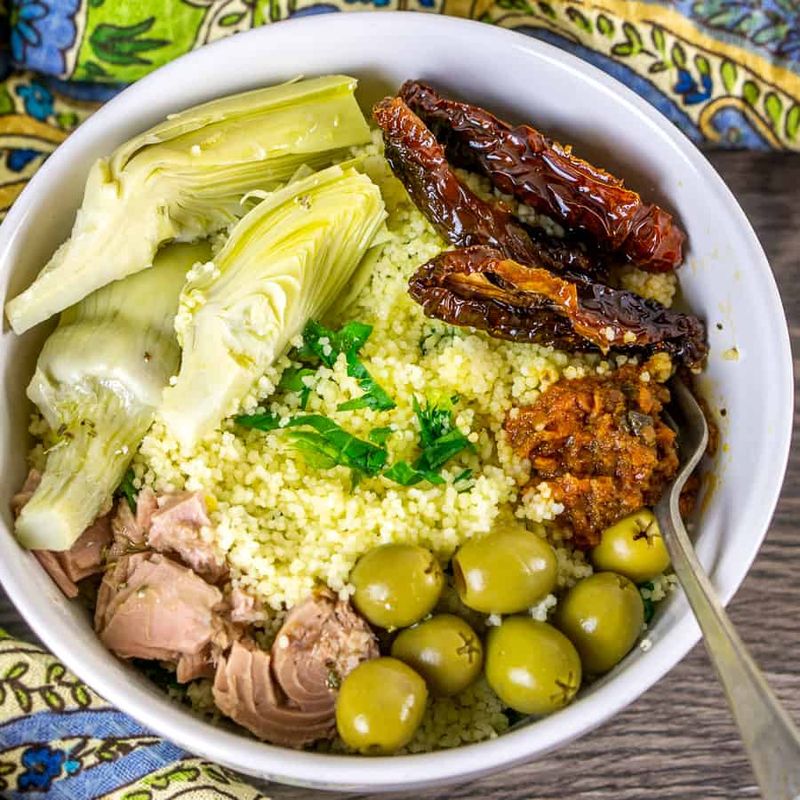
When the kitchen feels too hot or time runs short, no-cook tuna power bowls deliver complete nutrition without breaking a sweat. Start with pre-cooked grains like quinoa or instant rice as your base—even microwave packets work perfectly.
Add drained canned tuna as your protein centerpiece. Build flavor with shelf-stable ingredients: jarred artichoke hearts, roasted red peppers, and olives add Mediterranean flair without refrigeration. Chickpeas contribute additional protein and satisfying texture. A simple dressing of lemon juice, olive oil, and dried herbs ties everything together.
These assemblies work equally well for lunch meal prep or last-minute dinners. The components stay fresh when stored separately and combined just before eating, making them ideal for office lunches or quick household meals.
14. Smoking Techniques for Depth
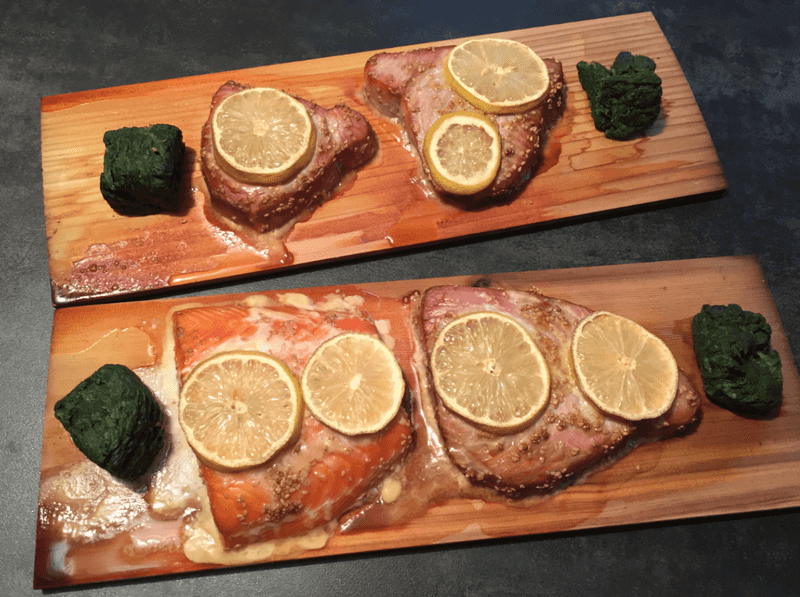
Introduce smoky complexity to tuna without specialized equipment. The cedar plank method infuses tuna steaks with aromatic wood notes—simply soak a cedar plank in water for an hour, then grill with the tuna on top. The wood smolders rather than burns, transferring subtle smokiness to the fish.
For indoor options, use smoked paprika, chipotle powder, or a few drops of liquid smoke to add smoky dimension to canned tuna preparations. These ingredients create depth that mimics long smoking without the process.
Tea smoking offers another accessible technique: line a wok with foil, add tea leaves, sugar and rice, then heat until smoking before briefly exposing tuna in a perforated pan above. This quick approach creates delicate smoke flavor without overcooking the delicate fish.
15. Sauce Strategies for Moisture
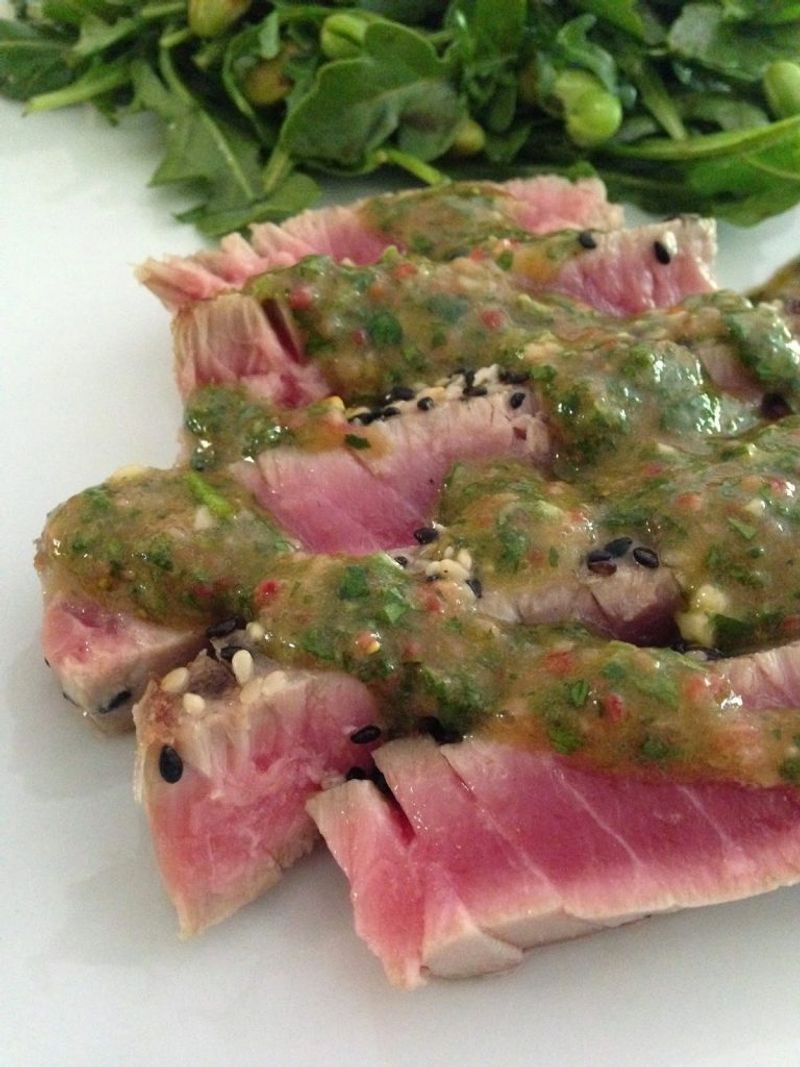
Strategic sauces solve tuna’s tendency toward dryness while adding flavor dimensions. Quick homemade aioli—mayonnaise mixed with grated garlic and lemon zest—creates a luxurious accompaniment for seared tuna without masking its flavor.
For Asian-inspired dishes, combine mayo with sriracha and a touch of honey for spicy-sweet heat. Herb-forward sauces like chimichurri or gremolata cut through tuna’s richness with bright, fresh notes. Simply blend herbs with olive oil, garlic, and acid for an instant upgrade.
These loose sauces penetrate the fish rather than sitting on top. Yogurt-based sauces provide tangy moisture with fewer calories than mayo versions. Mix Greek yogurt with cucumber, dill and lemon for a Mediterranean approach that complements tuna’s flavor profile while adding protein.

Leave a comment